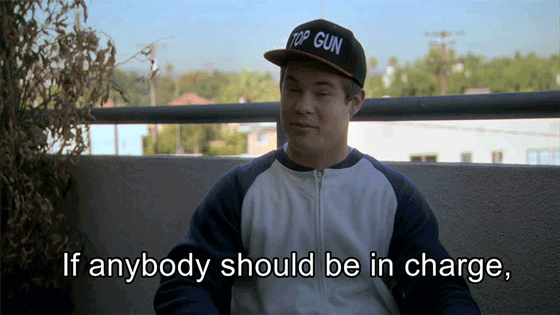
Unless you’re a boot-strapped, cave-dwelling, “I can do everything on my own and don’t need anyone to be successful” solopreneur, collaboration is absolutely essential to your success.
And let’s be honest, as cliché as it might sound, John Donne was right, “No man [or woman] is an island.”
Why?
The simple answer is because that’s not how the world – especially the business world – works.
“In the workplace, the more a team member feels their team is working together, the higher their job satisfaction is likely to be, the more they’ll learn at work, and the better the team’s overall performance will be,” writes Belle Beth Cooper, co-founder of Hello Code.
In other words, teams are nonnegotiable.
The bad news is people hate working in teams. In fact, people hate working in teams so much that there’s an academic term for it: team hate.
So how do you build a team that thrives?
Here are five of the most common workplace collaboration problems … and exactly how to overcome them.
Too many tools
Let’s start with the obvious: productivity and workflow tools are everywhere. And with each, the promise is the same: work less and get more done.
While many of these tools deliver, the most pressing problem is their sheer number.

Communication gets chaotic when you use emails for daily communication, Evernote for articles, SlideShare for presentations, Pocket for videos, Buffer for social media, and any one of a hundred different cloud platforms for file sharing.
The key is to limit the number of tools by finding a few that are easy and effective.
“Understand the team. Take your time to get the right tool,” writes David Arnoux, the co-founder of Twoodoo.
Focusing on meta-tools that integrate the applications your team already uses is an efficient way to collect resources and collaborate. For example, memit, much like other curation platforms, allows you to save and share both online and offline content. In addition, however, it automatically creates a digital copy of whatever you “meme” in your preferred cloud storage as well as enabling you to track engagement stats and share via social media. In a similar way – though without cloud integration – Pressly specializes in building custom online hubs that can be used to share both external articles and internal resources along with direct social media sharing and even email newsletter creation.
Whatever you do, stop splintering conversations. Use as few tools as possible that offer long-term value.
Too many goals
Goals are essential to success. But what happens when someone’s individual goals don’t align with the goals of the group?
Frustration. And again … team hate.
Goals are needed in order to make the collaboration a success, yet having too many ego-driven goals breaks down the collaboration process.
The way to avoid goal overload is to separate overarching project goals from the individual task goals of each member.

For example, say your project goal is to increase website subscription by 100 percent over the next three months.
This overarching goal can be broken down into three or four specific goals:
(a) A/B Test the form placement for signups on your website
(b) experiment with the type and format of your content
(c) promote that content on your social media platforms
(d) A/B test your email newsletters itself.
While it sounds simple, breaking up the big goals into smaller ones eliminates self-serving from the group’s big-picture. It also gives your members their own specific, winnable goals to contribute to.
You can even go one step further and include your team members in the goal setting process. Such thoughtfulness will motivate your employees to become invested in the success of the project.
Utilize project management tools to clarify the roles and goals for team members. JIRA, for instance, is a cross-departmental project management tool that provides insights into what every employee is working on.” According to Rami Essaid, the CEO and co-founder of Distil Networks, JIRA acts as a “triage tool that allows you to focus on what’s important while keeping up with deadlines.”
Goal alignment will enhance individual employee engagement and stimulate team members to work as a cohesive unit.
Too many leaders
At the enterprise level, single projects often have multiple team leads, each with their own agendas, desires and to-do lists.
An unclear delineation of responsibilities between these various leaders will result in confusion, frustration and dysfunction.

Singularity at the leadership level is key. The absence of a clear structure creates a vacuum in which the most dominate team members will naturally assert themselves negatively.
Another way to promote healthy leadership is to create an organizational system that inspires transparency, accountability and feedback at all levels.
“To encourage team members to work together, you can alter the structure of the team so they rely on each other more, or simply design work projects in a way that encourages teamwork,” writes Belle Beth Cooper in “The science of collaboration.”
Giving team members the leeway to self-manage when appropriate or pick their own team leader drastically reduces the fiction.
When employees actively participate in the team building process, they will become more invested in the project’s success, which drives them to put their best foot forward at all times.
Too many time zones
Virtual teams are rapidly restructuring organizations. It has become commonplace for employees to be spread across the globe. While remote working has lent flexibility to the recruitment process and freedom to the employee, it is also plagued by time zone scheduling issues.
According to a study conducted by RW3, 81 percent of the survey respondents reported time zones as a key roadblock for virtual teams.

Providers like ClickMeeting have gone a long way to bridging these gaps by not only offering face-to-face meeting over the web – much like GoogleHangouts or Skype — but by including features like live chat translation.
In addition, any group meeting app worth your time will include a time zone setting that coordinate automatically with each user.
World Time Buddy is a simple time zone scheduling tool that is a “cross between a time zone converter, a world clock converter, and an online meeting scheduler.” A vertical scroll bar can be moved around to select a convenient date and time for your web conferences and phone calls.
An even simpler solution is Slack, which was Buffer’s number one pick on a list of the 14 essential social media collaboration tools. At its core, Slack is essentially “a robust chat room.” While memit is great as a long-term collaboration hub, Slack takes the time zone problem out entirely by allowing team members to share resources live or in short bursts within designated chat rooms.
Too many egos
According to the Global Human Capital Report (2008), “half of all employees (49%) see personality clashes and warring egos as the primary cause of workplace conflict.”
The problem of “Too Many Egos” is similar to “Too Many Leaders” … only more volatile.
Often we hear the terms “Type A” or “Type B” personalities.
Type A people tend to be ambitious, rigidly organized, anxious, and impatient. Most likely, people with type A personalities are extroverted and like to take control. On the other hand, type B personality are more reflective and easy-going. They are creative and enjoy planning process, which means they often respond more slowly.

The best way to avoid the inevitable clash of A vs. A and A vs. B is to structure your team composition as well as your workflow in a way that caters to different personality preferences.
For example, in meetings use the pomodoro technique to create timed segments that allow everyone to participate and keeps the type As from dominating. To encourage type Bs, always distribute your plans, agendas, goals, and task in writing before a project takes off. This gives them time to think and respond at their own pace.
Also remember, egos don’t have to be a bad thing. Egos drive competition and competition fuels innovation. The key is to celebrate wins and cultivate an atmosphere of mutual praise. Whenever possible get everyone involved in the project together and always giving credit where credit is due.
Takeaways
“We” is always more powerful than “I.”
As Walter Isaacson put it in his recent book The Innovators: How a Group of Hackers, Geniuses, and Geeks Created the Digital Revolution:
Most of the innovations of the digital age were done collaboratively.
There were a lot of fascinating people involved, some ingenious and a few even geniuses. This is … a narrative of how they collaborated and why their ability to work as teams made them even more creative.
Start building your team’s collaborative and innovative narrative today.
Get the TNW newsletter
Get the most important tech news in your inbox each week.




